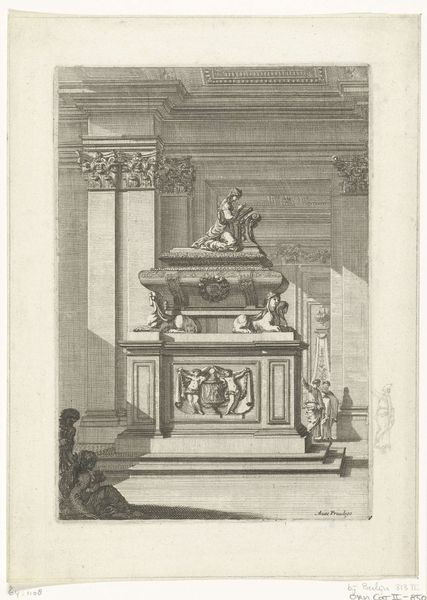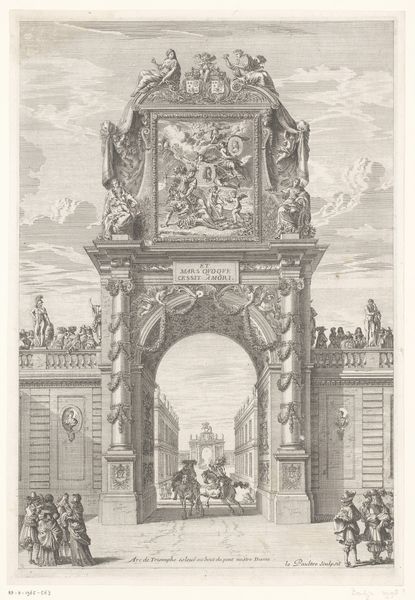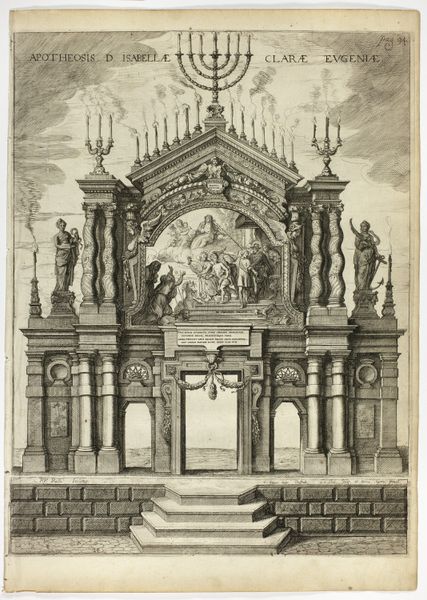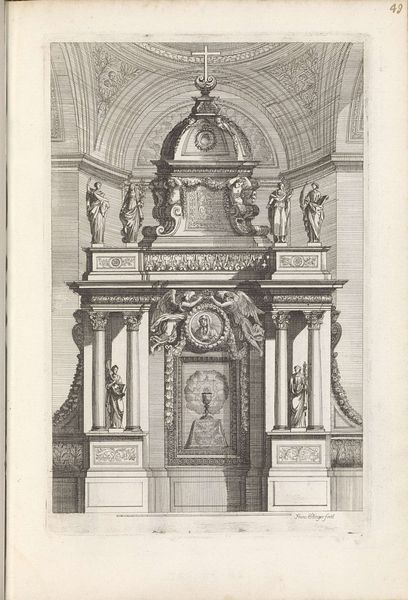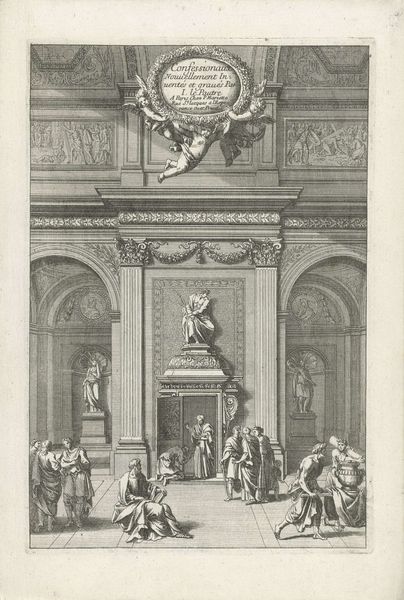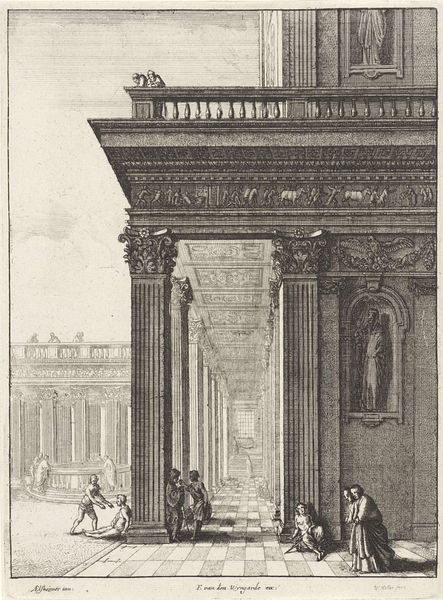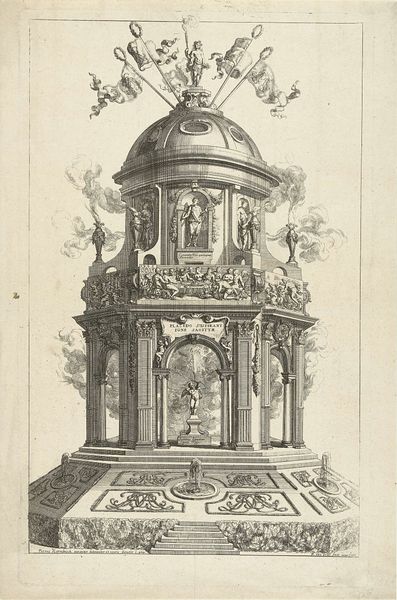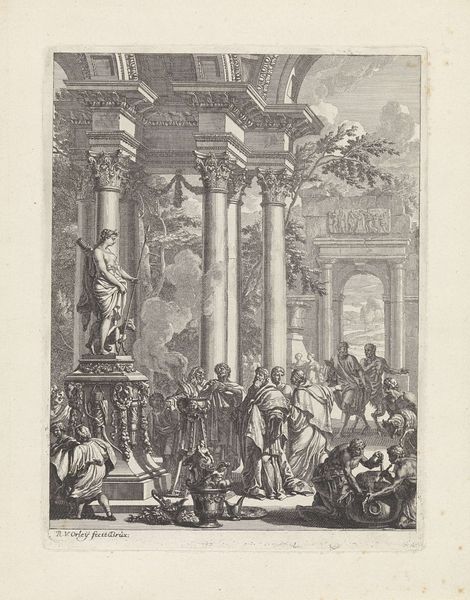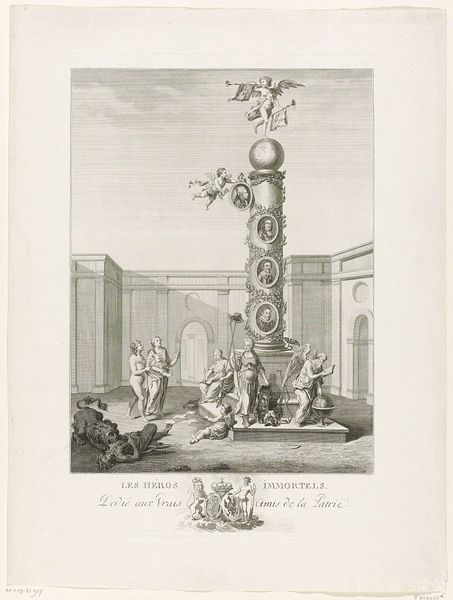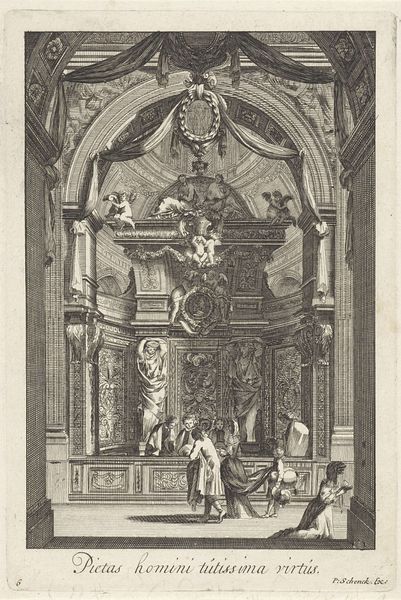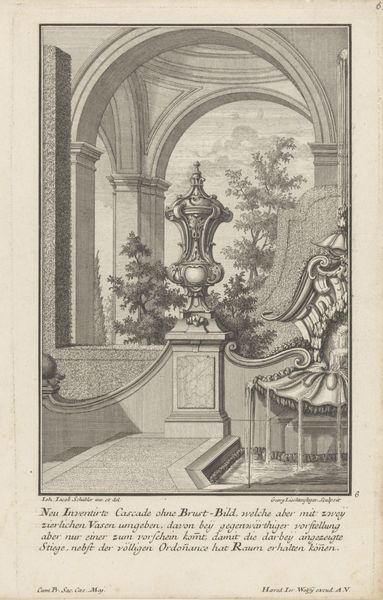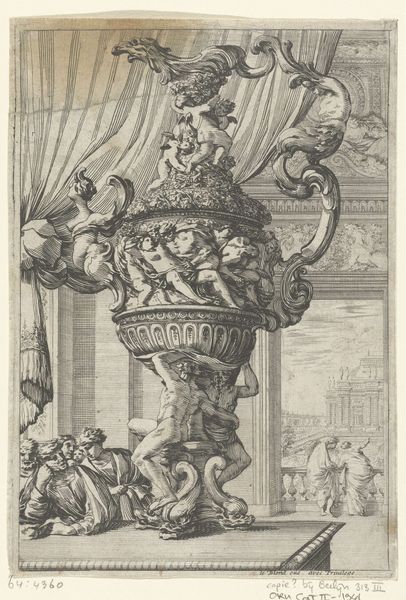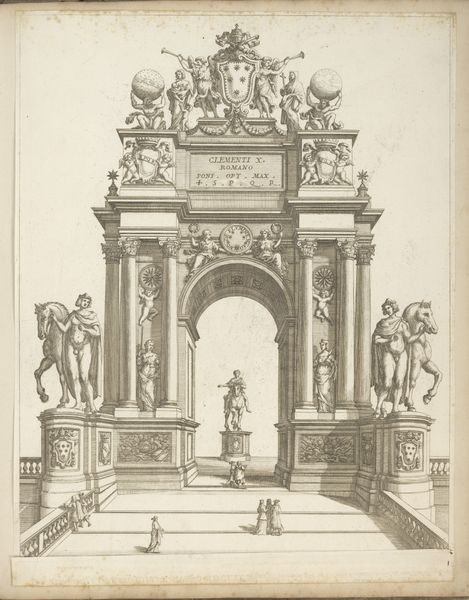
print, engraving
#
neoclacissism
# print
#
old engraving style
#
pen-ink sketch
#
cityscape
#
history-painting
#
engraving
Dimensions: height 328 mm, width 227 mm
Copyright: Rijks Museum: Open Domain
Editor: Here we have Johannes Jelgerhuis' "Tomb of William I, Prince of Orange" created sometime between 1796 and 1850. It's an engraving, offering a detailed view of the tomb within a grand church setting. I'm immediately struck by how imposing the tomb is, a sort of monument within a monument. What do you see in this piece? Curator: It's interesting that you mention the monumentality. Notice how Jelgerhuis uses Neoclassical imagery, drawing on ancient Greek and Roman forms. These forms weren’t chosen arbitrarily; they speak to ideals of civic virtue, republicanism, and enduring legacy that William I embodied, and that the Netherlands, in its nation-building, wished to project. Do you see how the angel figure is rendered, and the pose, drapery? Editor: Yes, it definitely has that classic, almost theatrical pose. The angel feels like it's part of a stage production. And there are what appear to be statues in the pillars as well! Curator: Precisely. Consider how these symbolic figures functioned within the cultural memory of the Netherlands. Angels often symbolize divine favor, perhaps alluding to William's role as a divinely appointed leader. Those statues? They probably represent virtues and characteristics they wanted associated with Willem. Can you guess which virtues? Editor: Hmmm...Justice, perhaps? Fortitude? The one on the right certainly looks…stern. Curator: Those are good guesses! And see how people are depicted, in the lower parts? The tiny viewers… it really brings a scale to this… the work operates on symbolic and memorial levels. Editor: I hadn't thought about it that way – as deliberately constructing a national narrative through symbols and architecture. So much meaning packed into one image! Curator: Exactly. By examining the iconographic choices, we gain a deeper appreciation for how history, power, and memory intersect.
Comments
No comments
Be the first to comment and join the conversation on the ultimate creative platform.

